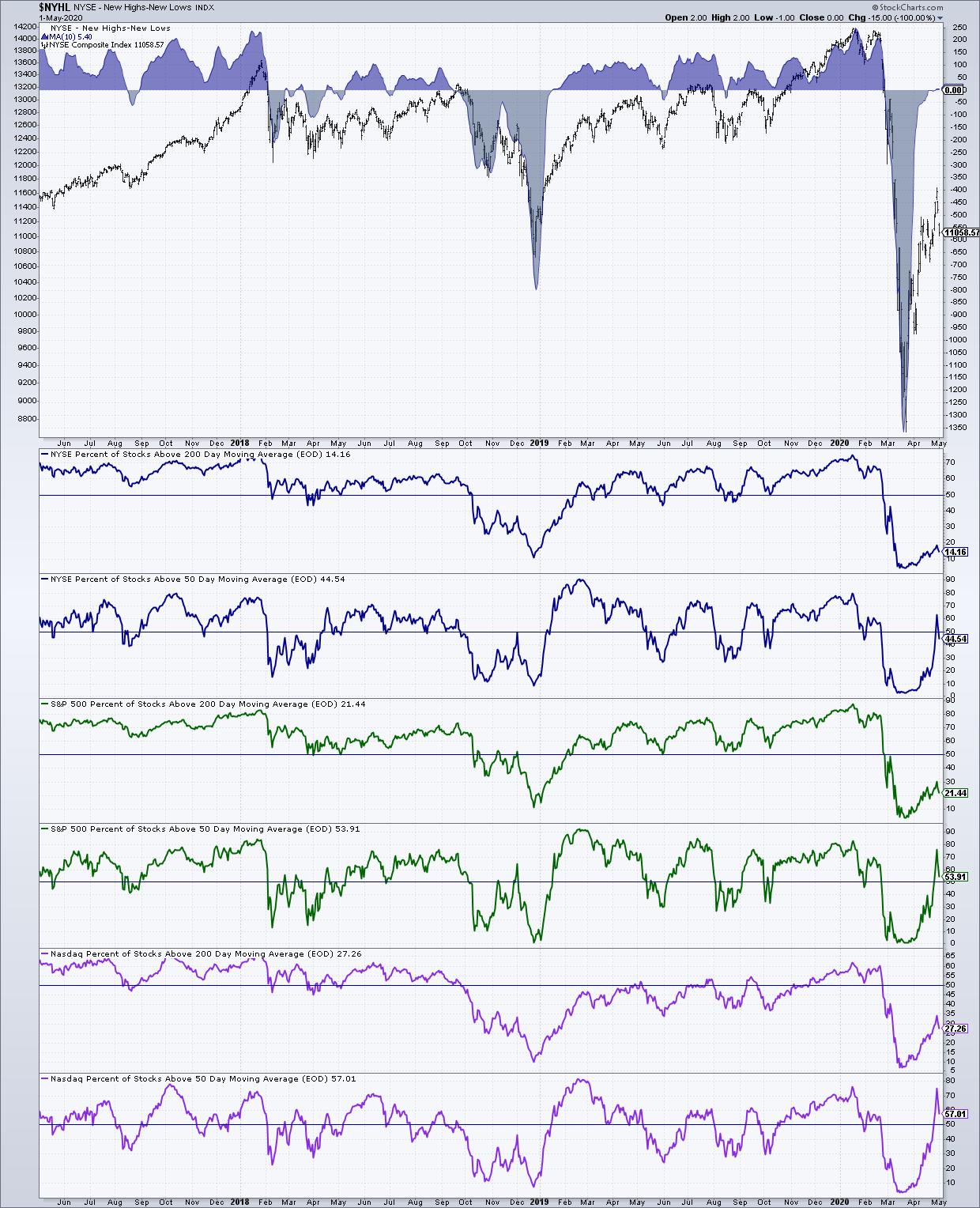 Anytime I hear a successful, well-respected figure mention the importance of routines, my ears perk up. I firmly believe that routines (and the discipline to stick to them) are the secret to success, from investing to sports to business to music – you name it. When I hear that same opinion reflected in the words of another, I listen closely.
Anytime I hear a successful, well-respected figure mention the importance of routines, my ears perk up. I firmly believe that routines (and the discipline to stick to them) are the secret to success, from investing to sports to business to music – you name it. When I hear that same opinion reflected in the words of another, I listen closely.
Last month, a blog post from Fred Wilson, co-founder of Union Square Ventures, caught my eye for this exact reason. I've been following Fred's daily blog for some time now, and I'm always struck by the insights that his short pieces provide. His brief post, simply titled "Routines", resonated with me quite profoundly.
I've included the copy from Fred's original post below, and I highly recommend subscribing to his daily blog here (free insights from a successful early-stage investor – not bad!).
Routines
I am often asked for advice on productivity. People want to know how I get things done.
The truth is I am not well organized, I don't use any productivity tools.
I work hard but I don't work all of the time. I have a decent work life balance.
My secret, if I have one, is routine.
I try to do the same things at the same times every day or every week.
Some examples:
– I like to meditate first thing after I wake up.
– I like to handle personal financial matters on Saturday mornings (something I learned from my Dad).
– I need to blog before I leave home or I have a hard time getting that done.
– I work out before breakfast.
When I stick to my routine, I seem to be able to get a lot done.
When I get out of my routine, things fall apart quickly. It is like dominoes. One falls down and knocks down all of the others.
There are challenges with relying on routine. Lots of traveling, for example, makes it hard to stay in a routine.
But I have not found any organizing principle more powerful than routines and I try to apply them to as much of my life as I can.
As an investor, I think of my routines as the transmission, putting me in the right gear at the right time to ensure that my trading runs like a finely-tuned sports car.
Furthermore, I know that the most powerful determinant of your success as an investor is your ability to stick to your routines, day after day, week after week, year after year. If I ever begin to feel that something is off in my trading or things aren't going as well as they should, it is almost a guarantee that I can root it back to a lack of discipline. I'll point to my list of routines and say, "Yep, I've been slacking. I haven't been sticking to my routines. I've been ignore my checklists, procrastinating or getting lazy, and it shows".
Fortunately, I always know the solution. Buckle down, refocus, and recommit to my routines.
Gatis and I hosted our 4th Investors Boot Camp here in Seattle last month. Naturally, it was a fantastic opportunity for us to reflect on our own investing processes, evaluating our discipline, routine following, system execution and more. We discussed with the group at great length the yearly, monthly, weekly and daily routines that Gatis and I both employ in our respective trading systems, and I received quite a few questions about my personal "Sunday routines" in particular. This is something that I touched on in a previous blog post from November (worth a read when you're finished here), but it deserves a deeper dive.
I shared with our Boot Camp group the following list of Sunday routines in order to to give them a sense of what I make sure to do each and every week. Now, this list is my own – it is in my language, tailored for my investor profile and built specifically to work for me. However, the general structure is something that I believe is applicable to all investors, and I fully expect this list to be helpful for you.
So, my weekly routines are...
1. Update my Weekly Sector Rotation spreadsheet
I track the SCTR values, Sector PerfChart position and RRG position for all 11 sectors, plus SPY, which mirrors the S&P 500 as a whole (I use SPY because it is an ETF with a SCTR value, unlike the index, $SPX). This gives me a sense of where the market's major groups are heading, what's leading, what's lagging, and where I want to keep my attention focused.
2. Review the "Market Evaluation" ChartList
I run through a 20-chart Market Evaluation list, which helps me determine exactly how healthy the current market is. This list addresses trend, breadth, allocations, unemployment, industrial production, and more. There's not much that can escape these 20 charts, so keeping an eye on the changes from week to week provides a remarkably reliable timing method. I've created a shared version of this ChartList for you to browse here.
 A breadth chart from my "Market Evaluation" ChartList
A breadth chart from my "Market Evaluation" ChartList
3. Review the "Index Watch" lists
I review a 10-year monthly chart, 2-year weekly chart and 1-year daily chart for the major market indexes.
4. Review the S&P Sector charts
I carefully study the latest charts for each of the 11 S&P Sector ETFs.
5. Review open positions for all investment accounts
With the markets covered, I then monitor individual positions for each of my accounts. I ask a simple question for each: is this position a buy, a hold, or a sell? Am I adding to this position, am I keeping steady with what I have, or am I starting to take some money off the table?
At this point, I've reviewed the market from the top down, drilling into the sectors as well. I've also spent time reviewing my open positions – monitoring what I am actively holding. I can now start to have some fun and search for new trading / investment opportunities.
6. Run the "Rising SCTR Above 80" scan
7. Sweep this week's "New 52-Week High" results
Every day after the close, I run a simple "New 52-Week Highs" scan and merge the results into the same ChartList. By Friday, I've gathered a list of everything that's made new highs within the week. I can then review this list for new trade ideas, and it's a curated list of stocks that are guaranteed to be showing strength.
8. Review SCTR rankings (Large and Mid Cap)
9. Sweep Watchlists and Stalking lists
I maintain multiple tiers of "stalking" lists, which include the new trades for which I am actively seeking an entry point. I carefully sweep those every Sunday to keep them curated, focused and up to date.
As a final step, I narrow everything down to a small list of just 10 stocks that I'm actively "stalking".
10. Check ETF "Fund Flows"
As a bit of a thought / observational exercise, I take a quick look at ETF.com's "Fund Flows" list. It's an interesting way to see where the market's money is flowing into and out of.
From there, I am free to keep digging around a few other sources of trading ideas, but that's about it. I've reviewed the market and its major sectors, spent time monitoring what I own and making notes about each position, and I've browsed through some new charts to find candidates for future trades. I keep an eye on those stocks / funds and move them up (or down) my stalking tiers as necessary.
Now, I want to reiterate that this list of routines is my own. It's tailored to fit me, it uses my language, and it matches the way that I trade the markets. The takeaway here is not the routines themselves, but the concept of carefully crafting and consistently following your own set of specific investing routines – daily, weekly, monthly and beyond.
Whatever your method of choice, just remember...
WRITE IT DOWN!
p.s. To maintain my routines / checklists, I use a tool called WorkFlowy, which allows me to check off each of the routines as I complete them. This simple list-generating tool works beautifully for my "digital style", but perhaps you are more inclined to keep your routines listed in a physical format.
Money In, Eyes Open.
- Grayson Roze
VP of Operations, StockCharts.com
Author, Trading for Dummies (Wiley, 2017)
Author, Tensile Trading: The 10 Essential Stages of Stock Market Mastery (Wiley, 2016)






